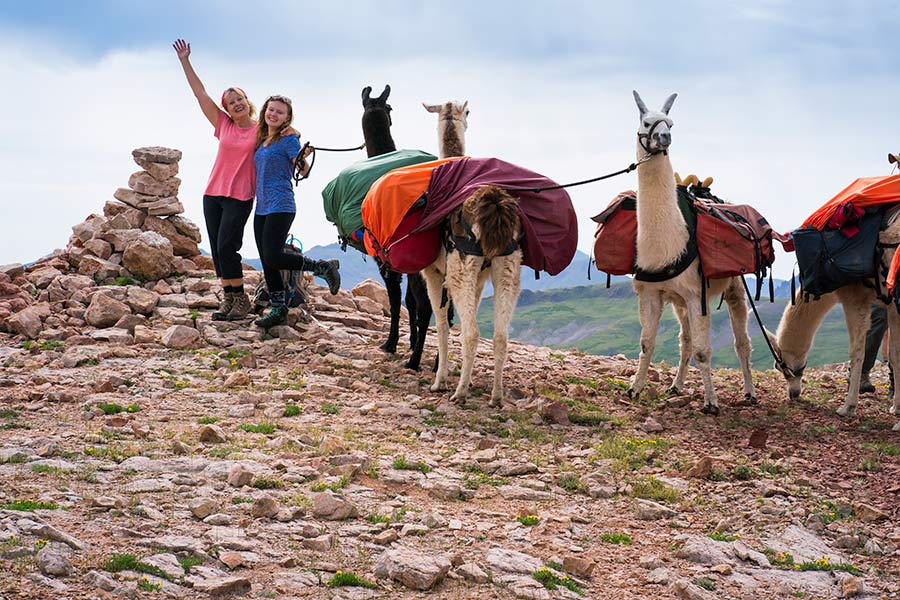About Packing with Llamas

The South American natives domesticated the llama over 6000 years ago. They found the llama and packs to be the ideal way to transport goods in the rugged Andes Mountains. It is interesting that they had no wheel for transport in their culture, but for those who have had the opportunity to visit Peru, Bolivia, Chile or Argentina, it easily understood that a wheeled vehicle might be very difficult to use.
The robust llama can easily pack 25 to 30 percent of its own body weight (70 to 95 pounds). Careful consideration of the proper pack gear can increase the working power and extend the packing career of a llama. The special adaptations of the lama foot (a leathery pad and two toe nails) makes them sure-footed in the most rugged terrain and allows them to have very low impact on fragile trails and alpine areas in comparison to other, traditional pack animals. With the eyes set on the side of the head and almost no face fiber, the llama has incredible vision, even usually able to see his own hind feet, with only a slight twist of the neck. This make the llama extremely sure footed on narrow trails. Unlike horses or mules, llamas usually obtain what they need in the way of food, by munching and browsing as they walk. Their water needs are mostly supplied by dew on the early morning grasses and the occasional stream. In very fragile environments (desert or very high altitude - timberline areas) packers need to carry additional food and water. It is always a good idea to carry grain or pellets as a treat, or as an enticement if one should get loose from his halter and lead.
Llamas carrying a full pack will follow a person anywhere it is possible to walk. They are often used by hunters or fishermen to access difficult places. Commercial guide and outfitting services and backcountry use of llamas is growing in North America with the ever-expanding trail systems. Llamas are used by the U.S. Forest Service and National Park Service for a variety of tasks in managing their lands. Llamas are effective in rescue work, utilizing a small cart, injured people can be brought down quicker, with less energy expended by the rescue team. Because of the llama’s calm disposition, relatively inexperienced trail maintenance and work crews can safely and efficiently use them to transport tools and material. They are used for packing trash and human waste from wilderness areas. Scientists find them ideal for transporting fragile equipment into the backcountry to assist in the collection of data.
For more information about packing or hiking with llamas go to the RMLA Educational Blog and search hiking and packing or click here for a great article.
Like this article? Become a RMLA Member today!

